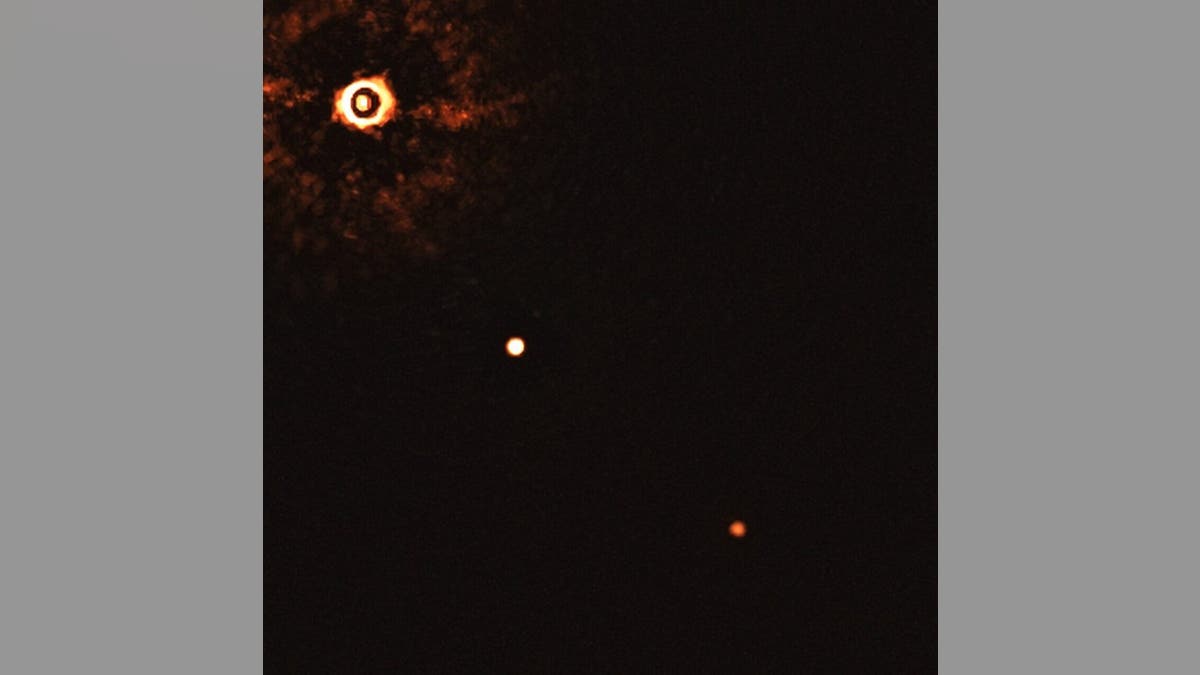Fox News Flash top headlines for July 22
Fox News Flash top headlines are here. Check out what's clicking on Foxnews.com.
Scientists have discovered a multi-planetary system orbiting a "sun-like star" for the first time, according to a newly published study.
The research, published in The Astrophysical Journal Letters, describes two giant exoplanets (TYC 8998-760-1b and TYC 8998-760-1c) orbiting the star TYC 8998-760-1, approximately 300 light-years from Earth. A light-year, which measures distance in space, is approximately 6 trillion miles.
“This discovery is a snapshot of an environment that is very similar to our Solar System, but at a much earlier stage of its evolution,” the study's lead author, Alexander Bohn, said in a statement.

This image, captured by the SPHERE instrument on ESO’s Very Large Telescope, shows the star TYC 8998-760-1 accompanied by two giant exoplanets. (Credit: ESO/Bohn et al.)
NASA WANTS TO EXPLORE NEPTUNE'S MOON TRITON, WHICH COULD HAVE AN OCEAN SUPPORTING LIFE
The find was made by the European Southern Observatory's Very Large Telescope (VLT) in Chile.
Prior to this discovery, images of two multiplanet systems were captured, but neither had a "sunlike star," the researchers added, making the discovery all the more important.
“Even though astronomers have indirectly detected thousands of planets in our galaxy, only a tiny fraction of these exoplanets have been directly imaged,” Leiden University assistant professor and study co-author Matthew Kenworthy said, adding that “direct observations are important in the search for environments that can support life.”
6 BILLION 'EARTH-LIKE' PLANETS IN THE MILKY WAY GALAXY, STUDY SUGGESTS
Both TYC 8998-760-1b and TYC 8998-760-1c are massive, but TYC 8998-760-1b, which had previously been discovered, is significantly larger than Jupiter, at 14 times its mass. TYC 8998-760-1c is six times the mass of Jupiter and both planets orbit the star at approximately 160 and 320 astronomical units.
An astronomical unit, which measures the distance between the Earth and the sun, is approximately 93 million miles.
The experts said that more research is needed to determine whether additional planets revolve around the 17-million-year-old star to make it even more similar to our own Solar System.
"The possibility that future instruments, such as those available on the [European Extremely Large Telescope], will be able to detect even lower-mass planets around this star marks an important milestone in understanding multiplanet systems, with potential implications for the history of our own solar system," Bohn explained.
More than 4,000 exoplanets have been discovered by NASA in total, approximately 50 of which were believed to potentially be habitable as of September 2018. They have the right size and the right orbit of their star to support surface water and, at least theoretically, to support life.





















